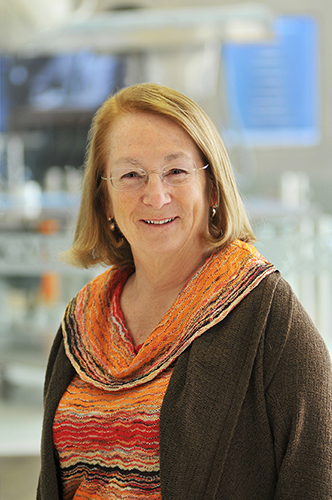Microbiology: A career of learning and discovery
Mary K. Estes, Ph.D., is a virologist with a passion for solving microbiology mysteries.

“Every day, there is something fun and exciting about this work,” said Estes, Co-director of Baylor College of Medicine ’s Translational Biology and Molecular Medicine Graduate Program and professor of molecular virology and microbiology. “It changes all the time. There may be some challenge you didn’t expect to face. Or some new technology comes into play that helps us answer questions or try an approach we couldn’t before.”
Gastroenteritis viruses are among the mysteries Estes has helped decipher. She developed virus-like particle vaccines for rotaviruses and noroviruses, and discovered new mechanisms of pathogenesis now being targeted for drug discovery.
“We have made many fascinating discoveries about rotaviruses,” Estes said. “And while vaccines are now available, these vaccines don’t work well in the developing countries where children are still dying. So our work isn’t done.”
Scientific Curiosity
“I was raised in a family that encouraged my intrinsic curiosity and tolerated my asking a lot of questions,” Estes notes. “In high school, as a hospital volunteer, I found myself asking what caused untreatable diseases and why treatments were not more effective. I wondered whether the answers to my question might lead to improved ways to prevent or treat diseases. Looking back, this may have reflected my inherent desire to pursue translational medicine, which wasn’t formally recognized as a discipline at that time.”
Estes says her family encouraged her to find a passion and follow it.
“I was never told that there were any limitations because I was a female – a message that was reinforced at the all-women’s college I attended,” said said.
“Scientific Children”
It’s satisfying to train the students in her programs, Estes says, and she considers them her “scientific children.” She helped start a new graduate program designed to develop a cadre of Ph.D. researchers who have an understanding of medicine and pathobiology and are committed to working at the interface of the basic sciences and clinical medicine.
Estes herself engaged in scientific discovery as a child, she recounts.
“We used to have family fishing contests. In order to increase our chances of catching the most fish, we would dissect some of the first fish we caught, then examine the stomach contents to determine if we were fishing with the right kind of food,” she said.
Exposure to science at an early age is important, Estes believes.
“I think if you can start getting kids excited about science in elementary school, that excitement can continue into junior and senior high school,” she said. “That’s a critical period for young women, because social pressures are tight and they can lose interest in math and science.”
Estes is pleased that her own granddaughter loves math.
“I hope that will continue,” she said. “And that she will have great teachers who will keep her interested.”
This blog post was shared with permission from BioHouston. This post originally appeared on BioHouston’s Women in Science With Excellence blog.




Pingback: Image of the Month: Repairing rotavirus-damaged intestinal cells